Digitalisation has been and continues to be one of the most fascinating lines of innovation and process transformation in terms of growth potential and areas of development for the future, in every sector of industry, but often its tangible implications and benefits escape most people. The expansion generated by digital technology in the cold chain is truly colossal and in some ways still to be explored, with operational results that are both qualitative and managerial.
The topic is not new, but its industrialisation and dissemination now seem more plausible due to three factors: the lower cost of infrastructures such as connectivity and the tools to activate it, growing literacy both among end users and intermediate figures in the supply chain such as fitters and maintenance technicians, and, above all, the ability of this innovative line to generate efficiency and effectiveness on several fronts, solving problems and pockets of historical ignorance in the management of counters, cabinets and cold rooms.
Yes, because if we look even only superficially at the outputs we receive from electronic management of the cold chain, we can see that two issues that are often the subject of attention are still problematic today, i.e.: the precise and continuous efficiency of equipment, on the one hand, and the quality of the cold and consequently the quality of food preservation, on the other, can be kept under control in a simple and clear way, capable of paving the way for preventive decisions of default and non-refrigeration, machine stoppages and permanent damage to the system.
What does this mean? That HACCP is no longer a mere legal obligation but returns to its true nature as a good practice, that the management of the product and system life cycle is much more controllable and less subject to problems and uncertainties, that the cold is monitored and managed and not simply supplied with standard performance testing and then entrusted to more or less informed and appropriate use.
This phenomenon is changing the nature and working methods of both those who manufacture equipment and those who install and maintain this equipment or design and install customer-specific cold rooms. The transformation is so intense and extensive that it determines new ways of organising work, because it requires new skills and, first and foremost, new sensitivities, with the top priority being an openness to communication that changes the very aim of the work: today’s counter manufacturer or refrigerator specialist supplies not objects, machines and systems but a service, a work tool that has characteristics and tasks – most importantly continuity and constancy of supply – which must be tackled and managed not with a view to state-of-the-art testing, but to performance over time.

A revolution that is technical, yes, but above all cultural: Stefano Preatoni, Telemonitoring Manager of Epta Service, and Emiliano Baglioni, owner of Baglioni Climatizzazione e Refrigerazione, while looking at the issue from different points of view, that of the manufacturer and that of the fitter, agree on this. And also on something else: the thermodynamics operators of the future must forge a solid alliance, a decisive synergy with digital technology, to offer high-quality cold at lower costs and with less environmental impact.
The cold cabinet is already smart, so let’s use it!
We are talking about the present, not the future: cold technology for food preservation is already smart, connected and interactive. This is the point of view of Stefano Preatoni, Telemonitoring Manager of EptaService, who shows us how the latest technologies allow us to guarantee the best quality of food, along with a reduction in consumption and costs, while guaranteeing maximum performance of the equipment
We are at a turning point for the cold chain: efficiency, reliability and performance are equally indispensable. This assumption is also shared and confirmed by those who work with the supply chain on a daily basis and are committed to continuous improvement.
“In order to compete on the market, retailers today rely on process efficiency and the continuity of system operation, in favour of the higher quality of the products offered to consumers. It is therefore essential to engage technical support with high added value that can guarantee maximum reliability.”
What are the added values?
Epta offers complete solutions that, in order to satisfy Retailer needs, combine cabinets and cells with a wide range of pre- and after-sales services offered by EptaService, ensuring savings in terms of running costs and maximum respect for the environment.
EptaService boasts a team made up of expert technicians who actively collaborate with customers and offer qualified advice at every stage, from design to installation, maintenance and servicing: all-round partnership with the customer. Careful co-design of the system is at the root of successful installation and of the definition of correct maintenance procedures and dynamics.
Is the assisted design of the system becoming increasingly important then?
Definitely: the telemonitoring service allows us to obtain useful elements to improve the design of the plant and has become an integral part of our offer. Thanks to precise design that starts from the individual needs of customers and thanks to the most innovative technologies, we are able to offer optimal solutions in terms of both energy efficiency and design.
So the situation is also interesting from the point of view of the producer?
The situation is extremely interesting, especially when viewed from a digitalisation perspective. During the design phase, it is possible to make more precise use than in the past of the data obtained through telemonitoring, which shows the real behaviour of the equipment on site, but also of the information collected by the servicing department, which no longer intervenes only in the event of machine failure, but also steps in when certain operational parameters are recorded.
How big is this field control network?
Today, thanks to EptaService Radar technology, we are able to monitor over six hundred points of sale in Italy alone, with a system that monitors every single machine installed twenty-four hours a day, seven days a week. The information processed is extremely useful because it helps to implement our database and improve our design and servicing facilities, generating high added value for the retailer.
So today it is not the simple refrigeration cycle that is decisive, but also its combination with remote electronic control
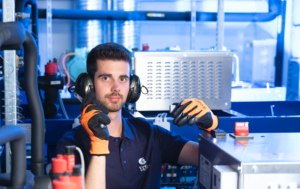
A high-performance system must always be flanked by telemonitoring, a service now considered essential by the majority of mass retail operators and the basis of a new way of choosing, using, managing and maintaining refrigeration, where product and service are two sides of the same coin. Today we are able to assess performance even more objectively than in the past. For example, at the points of sale that request it, we have replaced the temperature probe that measures the air temperature inside the cabinet with probes that simulate the thermal mass of the products and are able to activate an alarm when they record anomalies, to solve the problem remotely, if possible, or intervene on site and always ensure the best quality of food. These probes also allow the acquisition of more objective data, eliminating false alarms caused in the past by defrosting operations or by opening the cabinet doors.
This means that we are approaching the measurement of the real temperature at the “heart” of the product”
That’s right. The probes that simulate the thermal mass of the products are positioned after meticulous laboratory studies and allow us to consider the temperatures of the products, reducing the influences of external events such as defrosting and open doors for loading the bench. This is also a real revolution in operational terms, because it transforms reporting from a simple report on functionality to a true performance certificate, clearly indicating the behaviour of each machine and the state of the products stored inside: something that users are increasingly conscious of.
A reporting model that completely changes the rules of maintenance
To anticipate and respond to these new requirements, Epta has adopted an integrated and dedicated software platform, developed by refrigeration experts and compatible with all the controllers on the market. This platform makes it possible to generate algorithms that integrate the variables of efficiency (consumption and wear) with those of effectiveness (temperatures required by law depending on the type of goods). Thanks to the combination of data acquired on a continuous basis on site and the skills resulting from EptaService’s know-how, we are able to offer smart management and maintenance options, capable, for example, of exploiting the information contained in the data and indicating the service status and effectiveness expected of a device in operation.
A new maintenance paradigm too
Of course, a paradigm that speaks of optimised consumption, conscious and prudent management of maintenance, in full compliance with the rules of correct conservation of goods. The electricity consumption of refrigerating equipment is a significant component of the running costs of a point of sale, along with maintenance operations and any economic damage that may result from the lack of cold and the consequent waste of products due to storage at incorrect temperatures.
What opportunities does telemonitoring offer in this sense?
It offers indicators and alert systems that intervene before the machine functions shut down. For example, the data collected by our EptaService Radar can diagnose the symptoms of a potential drop in performance before the cold fails. This allows us to verify the actual status of the system and manage any problems in advance, achieving significant savings in terms of maintenance costs and the highest food security and food safety. A system of predictive maintenance.
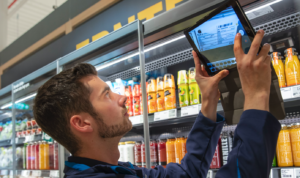
Is refrigeration failure “in danger of extinction”?
This is our goal and we are reaching it thanks to a careful policy of continuous improvement and an increasingly functional use of the data collected both through telemonitoring and during maintenance operations. This evolution allows us to overcome scheduled maintenance and to plan preventive maintenance operations. What we offer our customers is not an aprioristic maintenance calendar, but targeted interventions, planned on the basis of the specific conditions of the machine, such as: wear and tear, years of service, environmental conditions, degree of use and stress, etc. An approach which, besides dramatically reducing the risk of refrigeration failure, radically changes the type of intervention by the maintenance technician. To use a metaphor, the technician becomes like a doctor who has the tools to perform check-ups, to intervene as soon as the first symptoms appear. Thanks to real-time data analysis, we are able to anticipate possible failures and guarantee the quality of the food products stored in our systems. This is achieved through the continuous communication of systems with servers and software (SAP BI), where we collect and process data with Epta proprietary and dedicated algorithms, which allow us to eliminate false alarms and anticipate real ones. Furthermore, for contracts that envisage scheduled maintenance, we manage the frequency of intervention starting from the information collected to guarantee the best operation of the system.
Ad hoc maintenance is the new organisational model
Thanks to digitalisation and connectivity, which ensure continuous monitoring, maintenance goes from being a scheduled or emergency activity to an intervention that guarantees benefits from a performance, economic and environmental point of view and results in a significant reduction in machine stoppages.
So electronics have substantially simplified the work of the maintenance technician
Yes, because in addition to their personal experience, today’s maintenance technicians can rely on algorithms developed from the processing of data collected over the years by the telemonitoring service.cFor example, algorithms allow us to eliminate misunderstandings that used to transform recurrent situations, such as defrosting or opening doors to fill the cabinet, into alarms, and have helped make the data transmitted by the sensor even more useful from an operational point of view. Today, the “door open” alert is communicated to the operator of the supermarket’s reference department, who checks whether the cell is being loaded or whether the door has been left open by mistake. The alarm is communicated to the maintenance technician only after an initial check and if there is a real need for intervention.
So does this system allow us to detect improper use and support operators in eliminating behaviours that penalise the quality of storage? I mean, for example, poorly arranged loads which prevent the air from circulating properly
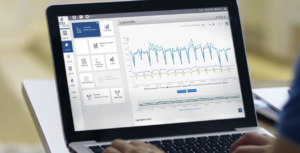
EptaService is already working in this direction. We provide information on the recovery probes. To ensure that the cabinet is loaded properly and to guarantee optimum performance, we flank them with a complete reporting system for the supermarket’s reference department. These checks ensure a reduction in energy consumption and better storage of food, two factors of particular importance in the mass retail sector. If anomalous recovery temperatures and frequent alerts are reported in a department, it is possible to intervene promptly, suggesting behaviour that reduces the possibility of anomalous temperatures.
Food security passes through the cloud: is this a plausible statement?
It definitely is. Moreover, the machine connected in the cloud to the telemonitoring systems allows the retailer to certify the correct preservation of the food with the competent authority in order to comply with the HACCP regulations. The adoption of these technologies also helps to strengthen the bond of loyalty with customers, who are increasingly informed and attentive to a healthy and safe diet, who can therefore confidently rely on the supermarket.
This requires smart use of data and information
First of all, it requires the ability to direct the information processed to those who benefit from it: experience has led us to establish, through proprietary algorithms, which message to send to each interlocutor in the supply chain. We propose a level of customisation of information that is able to satisfy specific and distinct needs: the maintenance technician is able to carry out historical analyses of the machine’s operation and performance, the manager of a supermarket department can receive HACCP reports with personalised parameters and frequency, the operator can receive reports on detailed problems concerning the operation and performance of cabinets and cells.
Are we talking about an instrumentation and a technical culture present only in the big chains or are these methods being widely accepted?
The big chains are now making massive use of them and in the more fragmented private sector, which represents an important share of the market in Italy, attention to these new instruments is growing, also and above all because they are a valid instrument for fulfilling legal obligations. The demand for reporting that meets the requirements imposed by the rules is now standard. When talking to customers, after installation, there is often an interest in collecting and processing data with Epta Service Radar, which makes it possible to create virtuous attitudes in the use of machines, both in terms of consumption and performance.
We are no longer talking about an optional extra, but about a requirement…
As I mentioned earlier, telemonitoring has been in the various specifications of large chains for a long time now and even small retailers are now inclined to request this service as a standard feature in new installations: each of our new installations includes remote control and the development of a customised reporting system.
HACCP was a best practice which became a standard and is now becoming a best practice again
The cloud has transformed legal obligations into work tools: the report is a tool for the operational (and not merely regulatory) control of consumption and the quality of food preservation that combines efficiency and effectiveness. Today we can calculate the real COP of the machine’s work and are able to provide information through proprietary algorithms that bring together the quality manager and the energy manager. A system that allows us to control the work of the machine in real operating conditions in order to ensure that it works properly and to intervene, if necessary, to normalise consumption.
Can we say that Epta is facing a new market, where product and service are complementary?
Product and service are becoming increasingly inseparable: more and more often, our product supply contracts are combined with long-term service contracts, where the quality of the refrigeration cycle offered by the machine is enhanced by the monitoring system, which ensures high and constant performance levels. Epta’s “new” cold is thermodynamic and digital.
HACCP enters the cell
We mean the cold cell, a place where, until now, the Hazard Analysis and Critical Control Points, the procedure required by the Codex Alimentarius as binding for the management of food products, had remained slightly on the fence. But in the age of complete traceability, when the cabinet and display devices are so strictly controlled (see the interview with Stefano Preatoni, Telemonitoring Manager of Epta Service), the cell and its management are under the magnifying glass for food safety.
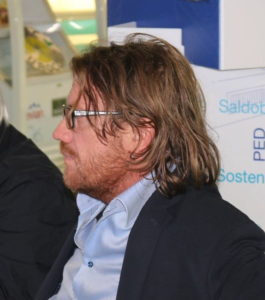
Emiliano Baglioni is an attentive observer of the market and also an innovative operator in the field of refrigeration installations dedicated to the food sector: we are talking to him about one particular piece of the puzzle, the cell, which – due to its generally customised characteristics – is not equipped with an on board management system that collaborates with a view to monitoring the quality of storage. But there are some innovations here too; let’s find out more.
But how much does the refrigeration specialist know about HACCP?
Paradoxically and unfortunately he knows less about his client and in this sense he often risks finding himself in difficulty: to tell the truth, compliance with HACCP rules in the past and also in the present is seen as an obligation to be fulfilled by the refrigeration specialist more for formal reasons than for substantial ones. As a result, he often runs the risk of neglecting the potential damage that a purely bureaucratic and non-tangible compliance with the standard generates for the food product.”
A very delicate situation
Yes, especially when it comes to small businesses, where customers also tend to have a formal approach to the standard and therefore become somehow “accomplices” of the refrigeration specialist’s lack of knowledge and worry about being in line with the regulations rather than real, controlled safety in the cold chain.”
What can change this situation?
The situation is already changing and for once we must acknowledge the merits of the entities in charge of control, the old Italian Local Health Authorities (ASL), now known as ATS, which have triggered a policy of stringent controls in Tuscany, for example, obtaining a substantial and tangible increase in attention to the subject and a cultural and technical growth the spread of which is definitely desirable regardless of inspections and sanctions, but which, thanks to inspections and sanctions, is beginning to be less isolated and practiced even by the smallest organisations.”
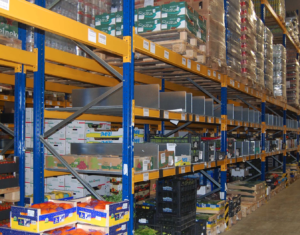
While bigger companies were already equipped?
Monitoring and control of performance in the most consistent dimensions has been a practice for some years, also and above all because of the significant economic damage resulting from refrigeration failures and their effects on the often large quantities of product stored.
So where does the evangelisation of the small operators begin?
From the benefit of the investment, from the elimination of costs and risks through the adoption of control systems that make it possible to transform the standard into a smart and responsible procedure to safeguard the quality of the product in the cell. Control means you can sleep easily because it protects you from inconveniences that you aren’t even aware of if you don’t have it. It protects you from the risk of working with raw materials that have been altered because they are not properly stored, and it protects you in many ways that far exceed the cost of your investment. This is certainly the strongest argument to encourage people to break away from the old, “Italian” habit, in the worst sense of the term, of fulfilling the rule on paper only but not in practice, because it costs less. It doesn’t end there though.
In what way?
Small, high-quality food productions, local products of excellence, have their strongest marketing lever in the fame of the product: if the preservation of the raw material, semi-finished or finished product is managed in a way that fails to protect the organoleptic characteristics and taste and sensory values properly, the commercial damage is devastating. Here, control is product value, even if we are not in a supermarket, because a highly appreciated cheese cannot afford to be badly preserved, the risk being that negative comments will damage its reputation causing its disappearance from the market.
The value of the dissemination of this operating methodology far exceeds that of compliance with the law
It is a commercial value and in this respect the refrigeration specialist must become a bearer of the message and the tools needed to put it into practice. But this commercial value starts from a decisive initial consideration that the refrigeration system is not a stand-alone appliance, but an instrument that generates a service, the correct preservation of food. If we begin reasoning like this, everything becomes much clearer: cold is not the aim, the goal is to ensure that the food reaches the consumer with its sensory and hygiene qualities intact.
So what is the rule to start from?
Those who design cells do not design the refrigeration of a space, but that of a product, of a quantity of product and therefore start from the product characteristics in qualifying and dimensioning the system. The speed at which the ideal temperature is reached, the maximum tolerable temperature delta and other variables are linked to the product’s characteristics. They are not independent thermodynamic variables but are strictly related to the natural and specific evolution – in this case – of the food stored.
So all the operations carried out by the machine must relate to processing or the product
Absolutely: elements like ventilation or humidity are factors governed in strict accordance with the product treatment method. For example, salting takes place in environments where there is no movement of air and therefore the management of humidity must be entrusted to static evaporators, which specifically safeguard the correct evolution of the product: in environments where the air moves, a crust of salt would form, jeopardising the consistent maturing of the meat inside. The refrigeration specialist has to know this because, in a case like this, the compliance of the system with the state of the art is of little use. And in order to gain this knowledge, it is necessary to communicate with the people in charge within the client’s organisation: quality managers, food technologists and so on.
And electronics have come to the rescue to keep the variables brought into play by the product and the standard under control
Electronics have apparently complicated things, because the “old” refrigeration specialist would use a spanner and a hammer to sort out a problem, while today, in the absence of the electronic card and spare part, he just stands with his arms folded. This said, electronics have radically changed the way we work, taking us in a diagnostic and predictive direction and freeing us from the role of first-aid operators. When I started doing this job, efficiency and the ability to organise the maintenance that electronics allow were not even imaginable. Thanks to electronics, the cold chain has made a significant leap forward in terms of manageability.
What percentage of refrigeration specialists is prepared to use these electronics?
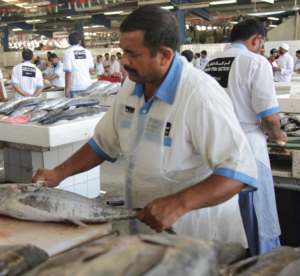
A growing number of operators, refrigeration specialists and refrigeration technicians are working on this line and are developing the necessary sensitivity to use the instruments it provides. Proof lies in the increasingly widespread use of electronic thermostatic valves, which have become a standard for those who want to configure advanced and controllable installations, but there is always the need to optimise by trial and error, because the optimisation of the system valve assembly is carried out by means of a PID calculation which few refrigeration technicians are able to set up independently and it is difficult to consider a standard setting in relation to the multiple conditions of use of the same valve. This is the case if we consider the potential of information originating from within the system. From the environment served by the system and the thermodynamic conditions outside the cell we are now really on a different planet compared to refrigeration a few years ago.
Would it be possible to manage the problems of the modern system without electronics?
Undoubtably no: electronics is the tool that has made the transition to a more sustainable cold chain possible, both in terms of the specific efficiency of individual machines and in terms of managing the problems posed by the elimination of coolants with a significant environmental impact, for example. Today, all this great acceleration towards controlled impact refrigeration would be unthinkable or very expensive, because it would require the complete elimination of the old solutions and a massive revamping that would be impossible for the pockets of customers of the existing fleet of machines.
But getting back to HACCP, we said that one of the variables that can be monitored concerns the environmental conditions of the space served by the machine: this is a very important indicator for food quality
But also those of the machine itself: let’s think of the ventilation factor in all refrigerated environments. Checking whether the air circulates properly is very demanding, but if we find that the evaporating pack tends to freeze, we can quickly deduce that there is a technical problem or that the cell is used poorly and there are no other ways out. A situation of this type really puts us in a position to control the quality of performance, because we are no longer talking about elementary variables such as the temperature or humidity detected at one or more times of the day, but about a continuous control which, thanks to well-defined algorithms, allows us to assess the behaviour of the machine in relation to the needs of the product stored. It is a simplified job, but at the same time it expands the variables involved, because it allows us to blame problems on poor use of the cell or the cabinet, freeing the system from responsibilities it does not have.
The HACCP is a work tool at this point
We must overcome the idea that it is only a rule to be complied with and consider it as a profitable work tool, because it gives the refrigeration specialist the ability to intervene and a value in the management of food products that can become central from a commercial point of view. Fortunately, this is already happening. Thanks to the electronics that allow him to assess the behaviour of the system and the performance of the cell, the refrigeration specialist acts as guarantor.
But is it the demand that stimulates you or is the category ready to offer these services?
The answer, as usual, lies in the middle. Customers pick up information, even just in passing, and then turn to refrigeration specialists with their questions, and a fair part of the world of refrigeration specialists is developing the technical and technological requirements to respond adequately to these questions. The market on our side is rising in level and we hope that this will continue happening in an increasingly obvious way, because this generates acknowledgement of professionalism. After all, winning the HACCP challenge would give the refrigeration specialist a more authoritative status in the relationship customers.
This also involves the formation of specifically trained personnel
My own personal hope, shared widely by others, is that new generations of refrigeration specialists and technicians will be trained more and more specifically in electronics because, as we said before, this is the tool that allows us to manage modern refrigeration. I would like the refrigeration specialist 2.0 or 4.0 to be more than simply a technician capable of using electronics, becoming an entrepreneur with the ability to grasp those aspects of the standard that highlight his professionalism and make it a determinant variable. As long as we “endure” the law and observe it merely at bureaucratic level, losing sight of the opportunities it opens up to us, we will continue to occupy a subordinate position, while we could become smart interpreters of the rules, developing technical and technological solutions that can make a difference to customers and make the contribution of a qualified refrigeration technician essential. HACCP is, if you like, one of the most significant test grounds for this cultural and professional growth.
Let’s make a practical example: what has Emiliano Baglioni done in this sense?
The size of my business does not allow me to have resources dedicated to the development of solutions, but the opportunity arose in the field: together with a start-up called TOI – the acronym of Things of Internet, I developed a project that began with the simple monitoring of the opening of doors and the temperature inside the cell, to produce efficiency indicators. This then evolved thanks to the import of an algorithm designed by Luca Tarantolo for Assofrigoristi for assessing efficiency in air conditioning systems that was to accompany the application of Presidential Decree 74. The result was Wi-ref, an innovative supervision and data acquisition system completely connected to the web, which allows the control of any refrigeration and air conditioning system anywhere in the world.
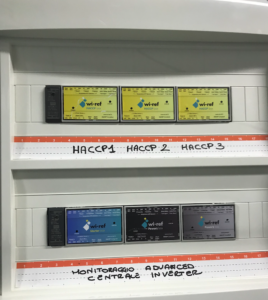
Wi-ref has a simple structure. The project is divided into three data acquisition modules, designed to meet every need in the sector:
- STARTER Module. Complete view of the internal parameters of a refrigeration system (internal temperature and relative humidity, open door contact, evaporating pack temperature, cooling cell electric absorption) and first analysis of system operation.
- HACCP Module Monitoring of temperatures “only”, up to three cold cells per module, and possible monitoring of door open status.
- The great advantage of having HACCP reports studied specifically for cooling systems, directly in you e-mail box, without even having to click on a link.
- ADVANCED Module “The real heart of the product”, the only instrument available on the market that, thanks to a complete analysis of all the parameters of any refrigeration and air conditioning system, allows the real-time display of ambient and system temperatures, humidity, pressure and electrical absorption.
- Internal analysis of the dashboard data through to real-time data on the energy efficiency of the system (EER/COP), all collected in a regular report that becomes a real tool for energy analysis of the system.
We have “localised” this analysis of the efficiency parameters in the refrigeration sector and have set it up by carrying out tests. Customer feedback has opened up new horizons for us.”
Which ones?
The possibility to know what the precise temperature variations were and how long the doors remained open shifted the field from the assessment of efficiency to the poor management of the machine: it emerged that there were uncontrolled situations in which the doors remained open for a long time, with specific inefficiencies in energy consumption, but also with significant temperature variations that caused damage to the food product stored in the cell. Customers provided us with feedback that greatly expanded the potential to control even trivial variables like this in the field of quality of work in the cold chain and from that point we optimised the platform.
It is clear that efficiency and effectiveness are closely related at this point.
Their correlation is clear, so clear that when the system works to compensate for improper behaviour that damages the product, such as leaving the door open for too long with consequent increases in humidity that affect the work of the evaporating pack, consumption increases! I do not want to trivialise the potential of using electronics in the HACCP field, but even these simple – I would say almost elementary – values recorded from an initial point of view of efficiency have given us the opportunity to support customers in the smart and conscious compliance with the rules on the preservation of food products.
Are there future horizons that can be opened up? The inclusion of air quality among the parameters monitored to support an even more comprehensive Hazard Analysis and critical point cataloguing support, for example?
Of course, the field is open: in some areas there is not so much a lack of sensitivity as an availability of industrialised sensors that make the decision to adopt control systems competitive and consistent in terms of cost-benefit, but the promotion of a digital culture such as that initiated thanks to the incentives provided by Industry 4.0 designs a future in which these investments are plausible and also rewarding, for the end customer, for the consumer and also for the supply chain operator, the refrigeration specialist, who becomes less and less a supplier and more and more a technical partner.




